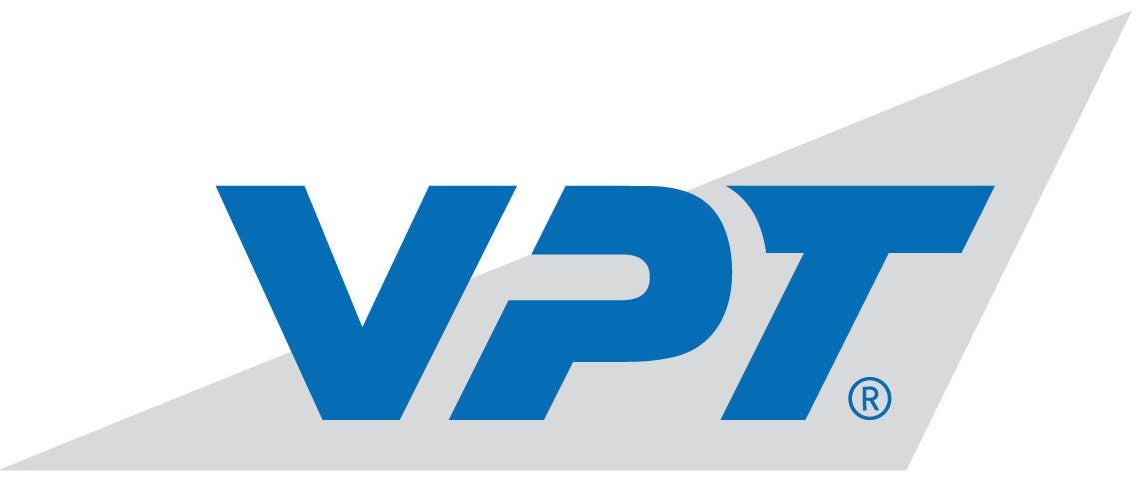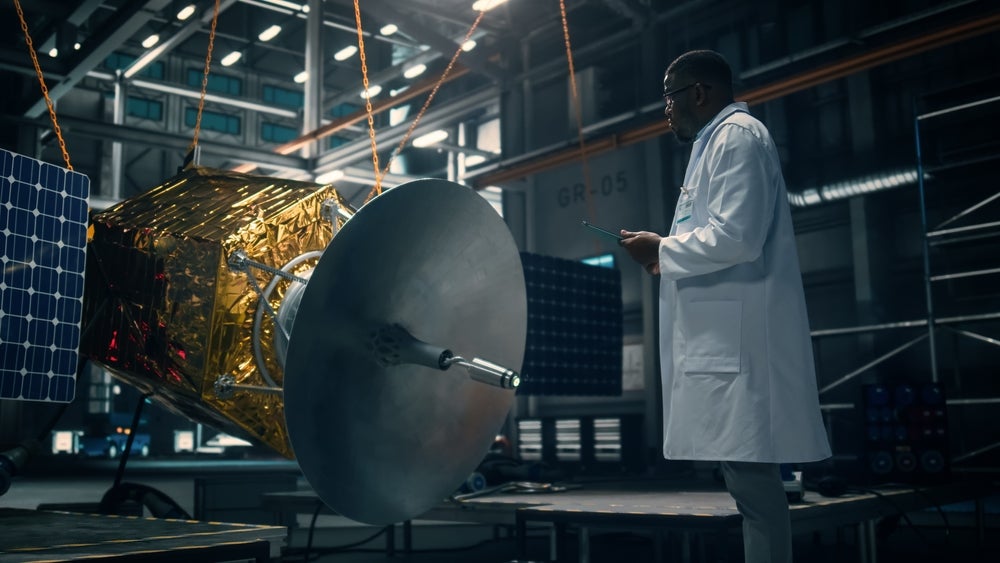
Mobile communications, navigation, internet, and television are just some of the technologies that consumers and businesses in developed countries engage with daily, all underpinned by networks of satellites operating in unison. As demand for these technologies has risen, so has the industry behind the infrastructure. The space economy was valued at $424 billion in 2020 and is projected to more than double by 2040.
A thriving space sector goes hand-in-hand with economic development, and now some rapidly developing regions are poised to make their mark. For example, Africa is home to some of the world’s fastest-growing economies; the African Development Bank Group projects that economic growth across the continent will average 4% in 2023 and 2024, significantly outpacing a global average estimated to sit between 2.7% and 3.2%.
With output growth will come enormous opportunities for the continent’s space industry to catch up with those in America and Western Europe. Up to now, the lack of availability and high development costs have hampered deployment of technologies that would enable developing nations’ space economies to flourish. However, innovative technologies such as CubeSats and more efficient spacecraft components are driving down costs. Because of these changes in the market, developing countries are now building and launching their own satellites.
The growth of the satellite industry
The global space industry has been a hub for growth over recent years. In January 2020, SpaceX’s satellite constellation achieved the distinction of becoming the largest in history. Blue Origin launched its first crewed space flight in July 2021, and NASA’s Artemis mission, which aims to return humans to the moon, marked its first successful lift-off in November 2022.
The push from commercial and government-run organizations to delve further into space, to the Moon and Mars, will have crossover for industries ranging from energy to medicine and will enrich life on Earth. Developing countries could benefit from such technologies, but prohibitive launch costs and underdeveloped markets have historically prevented them from sharing the benefits of space exploration.
However, advancements in materials, engineering, and power solutions used for successful space launches, has brought space within reach of entrepreneurs and investors in developing nations.
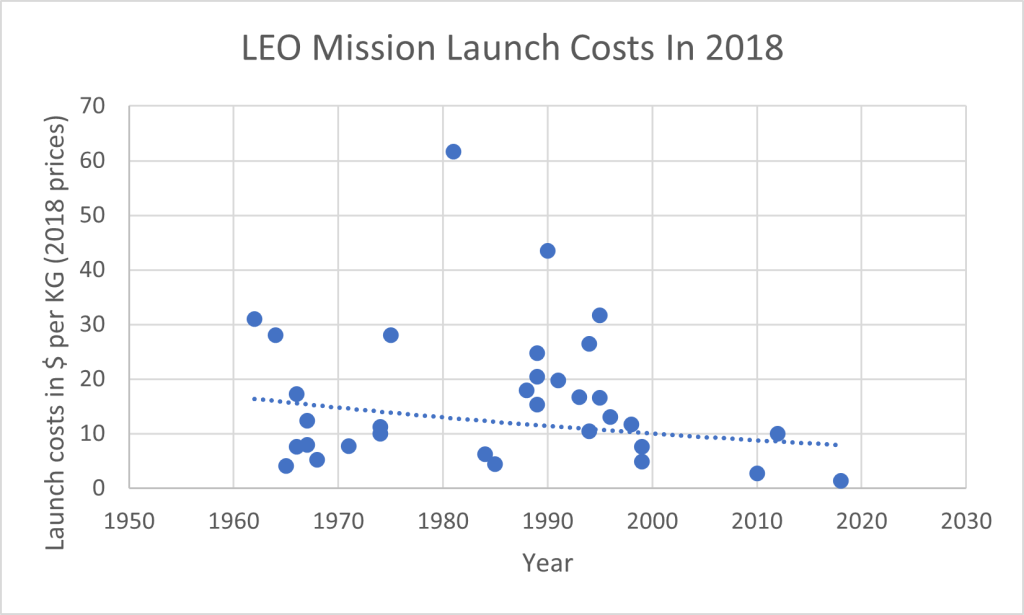
Available data on launch costs for shuttles and satellites since 1960 reveals a steady reduction. Launches in the 1960s averaged $14,200 per kilogram to reach low-Earth orbit (LEO); within 60 years this had dropped to just $4,700, a reduction of nearly 70%. With each passing year, low, predictable costs of reaching orbit are making missions more appealing for new entrants.
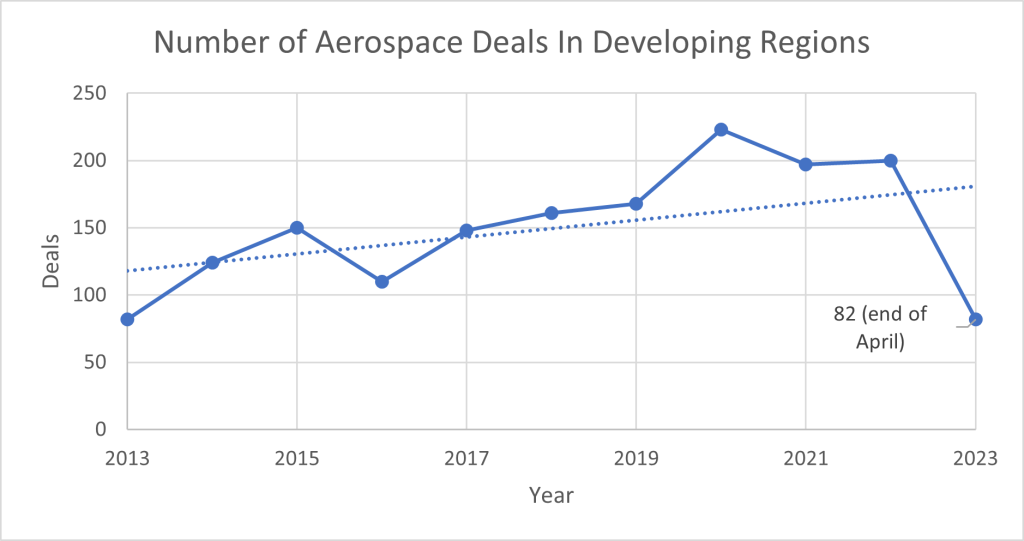
The above graph shows a steady upward trend in developing economies’ aerospace sector deals (comprising acquisitions, venture financing, equity and debt offerings, private equity, asset transactions, and mergers). Even amid supply chain shocks stemming from the Covid-19 pandemic and war in Ukraine, expansion shows no signs of slowing. Venture financing looks particularly healthy, as it has risen from just two deals worth $11 million in 2013 to 87 deals worth nearly $1.5 billion by the end of 2022.
All this new capital means developing regions’ space sectors are expanding. Africa offers one example.
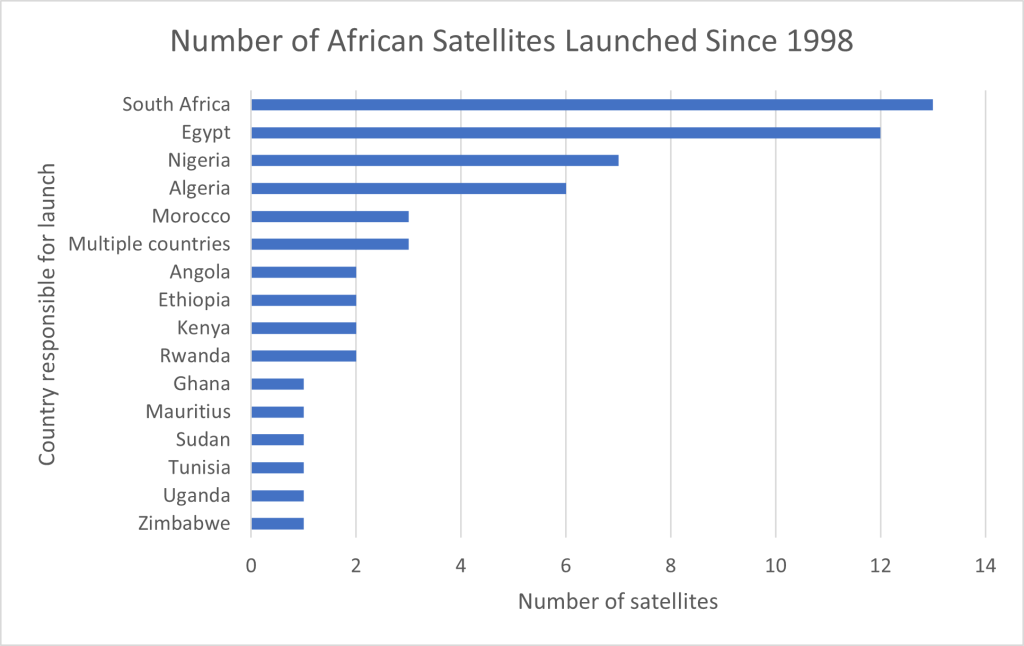
Some of the continent’s further developed economies – notably South Africa and Egypt – have been launching satellites since the turn of the century. But falling costs and growing requirements for technological infrastructure have prompted an abundance of new entrants. They are aiming to expand their telecommunication capacity and internet connectivity to bolster their economic potential. In the past five years alone, Ethiopia, Mauritius, Kenya, Rwanda, Sudan, and Tunisia have all put their first satellites into orbit.
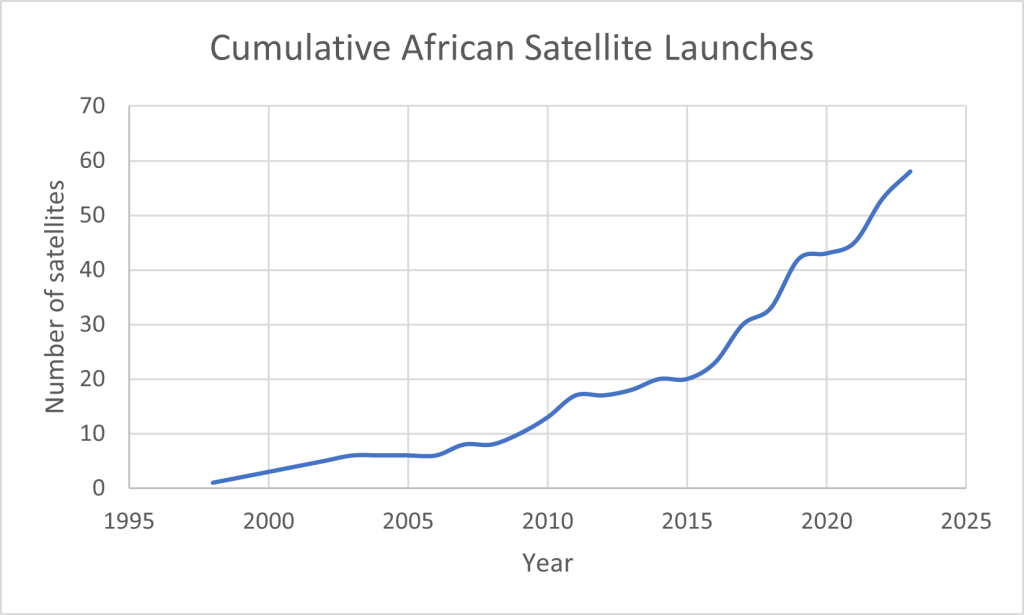
This means Africa’s space presence has grown from a standing start to nearly 60 satellite launches since 1998. With massive potential for expansion as the continent grows economically, operators planning a space launch need to ensure they are working with the right partners and selecting the correct power source for the job. By finding the right power supply partner, decision makers – in both developed and developing economies – can guarantee the infrastructural robustness critical for a successful mission.
High reliability power supplies at a reasonable cost
The aerospace market is difficult to access, and expense remains a significant barrier for new entrants. Power solutions must have appropriate radiation tolerance to ensure long-term reliability, be tested for Single Event Effects (SEE), and be optimized for low inputs and outputs to maximize efficiency.
Step forward VPT’s VSC series. The series is the industry’s first commercial off the shelf (COTS) DC-DC converter that minimizes costs and maximizes performance. This series is radiation tested to 42 MeV/mg/cm2 and guaranteed to 30 MeV/mg/cm2 for SEE and tested to 40 krad(Si) and guaranteed to 30 krad(Si) for TID in accordance with VPT’s in-house radiation hardness assurance (RHA) plan.
Whatever the budget, and radiation tolerance needs, VPT has a power solution to fit. For example, the SVL series offers radiation tolerance to TID: 60k rad (Si). Customers with more intensive radiation hardened requirements might look to the TID: 100k rad (Si) protection offered by the SVR series, with VPT experts on hand to ensure that satellite stakeholders get all the assistance they need at every stage in a new build.
VPT’s combination of efficiency and affordability means high-quality, DC-DC converters are no longer out of reach for up-and-coming markets. Whether the award-winning SGRB Series with state-of-the-art GaN technology; radiation hardened SVR and SVL lines suitable for various space programs; mission-proven SV Series for LEO, MEO, GEO, and deep space; or the VSC Series designed for NewSpace applications, these converters provide robust radiation resistance, comply with industry standards, and offer a variety of power output options – taking the cost and uncertainty out of critical space missions.
Developing markets will become a focal point for supply and demand in the space sector over the coming years, but decision makers need to embed the technologies that will ensure their success now.
Whether you are launching your country’s first satellite into space or looking for a new highly reliable yet affordable DC-DC power solution for your next generation of space exploration, VPT’s VSC Series is the correct choice to power your critical mission. Download the “VSC Series Space COTS DC-DC Converters and EMI Filters” whitepaper to learn more about the VSC Series features, quality, reliability, and more.

